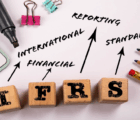 Kim and Ann start with an equal amount of money, but they value money very differently. Kim acts to maximize the expected squared amount of her total wealth. For example, Kim is indifferent between a 100 percent chance of her wealth being $1 and a risk for her total wealth of a 75 percent chance of $0 and a 25 percent chance of $2. In contrast, Ann tries to maximize the expected square root of the amount of her wealth. For Ann, a 100 percent chance of $1 total wealth is the same as a risk for total wealth of a 75 percent chance of $0 and a 25 percent chance of $16. Kim and Ann can each choose a percentage, from 0 percent to 100 percent, of their initial wealth to gamble on a fair coin flip, with the winner claiming the total amount that both bet. The coin flip is voluntarily negotiated beforehand so that the percentage each of them bets — the percentage need not be equal — is acceptable to the other one. What combinations of betting fractions would be mutually acceptable to both of them? You might want to draw a graph. Do you have an opinion about what specific combination of betting percentage they might settle on before flipping the coin?
Kim and Ann start with an equal amount of money, but they value money very differently. Kim acts to maximize the expected squared amount of her total wealth. For example, Kim is indifferent between a 100 percent chance of her wealth being $1 and a risk for her total wealth of a 75 percent chance of $0 and a 25 percent chance of $2. In contrast, Ann tries to maximize the expected square root of the amount of her wealth. For Ann, a 100 percent chance of $1 total wealth is the same as a risk for total wealth of a 75 percent chance of $0 and a 25 percent chance of $16. Kim and Ann can each choose a percentage, from 0 percent to 100 percent, of their initial wealth to gamble on a fair coin flip, with the winner claiming the total amount that both bet. The coin flip is voluntarily negotiated beforehand so that the percentage each of them bets — the percentage need not be equal — is acceptable to the other one. What combinations of betting fractions would be mutually acceptable to both of them? You might want to draw a graph. Do you have an opinion about what specific combination of betting percentage they might settle on before flipping the coin?
Know the answer? Send your solution to ar@casact.org.
 Day Trader
Day Trader
Martha only invests each day in either Stock A or Stock B, both having an even probability of closing +5 percent or -5 percent from the previous day. There are no sequential autocorrelations or sequential cross-correlations between the price changes. Whenever the stock Martha holds goes up +5 percent and the other stock goes down -5 percent on the same day, she switches to the other stock. All the ordinary basic assumptions about efficient transaction conditions hold. If Martha starts with $10,000 invested entirely in Stock A, what are the mean, 5th and 95th percentiles of her wealth after 1,000 days? What if the price changes on the same day for the two stocks have a +50 percent cross-correlation? What if the cross-correlation is -50 percent?
Here is a short and simple summary of the solution as suggested by Clive Keatinge. The value of the stock after 1,000 days of trading is the product of $10,000 and 1,000 independent random variables, each with an expected value of 1. Therefore, the expected value of the stock after 1,000 days of trading is $10,000. The number of up and down days follows a binomial distribution, which leads to a 5th percentile of $212 and a 95th percentile of $38,598. Same-day cross-correlations would not change the results.
Solutions were also submitted by Bob Conger, Kristen Fox-Neff, Eamonn Long and Jerry Miccolis.













